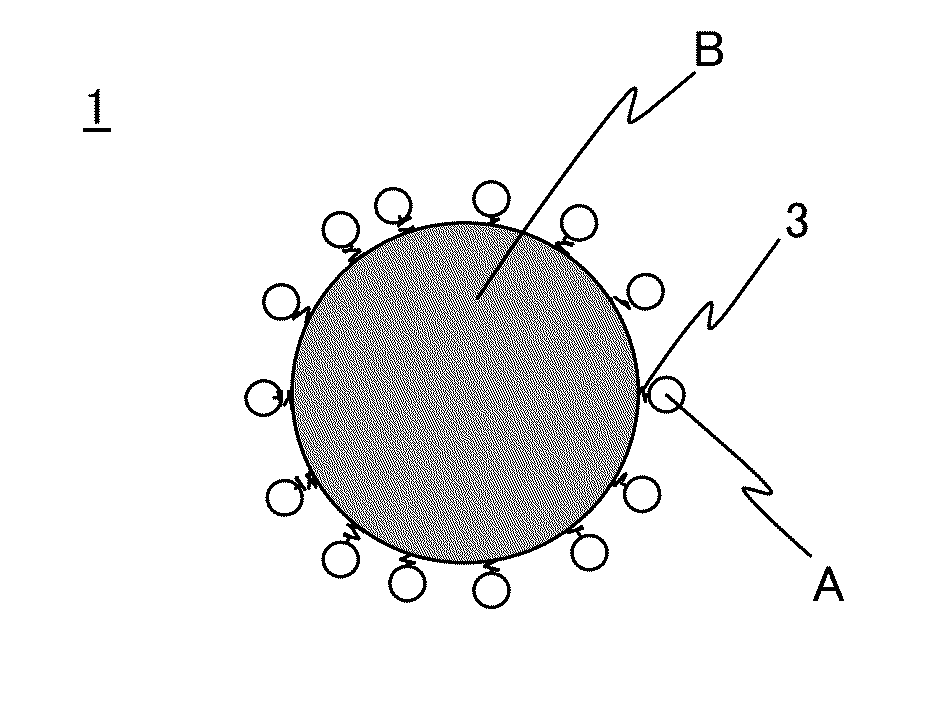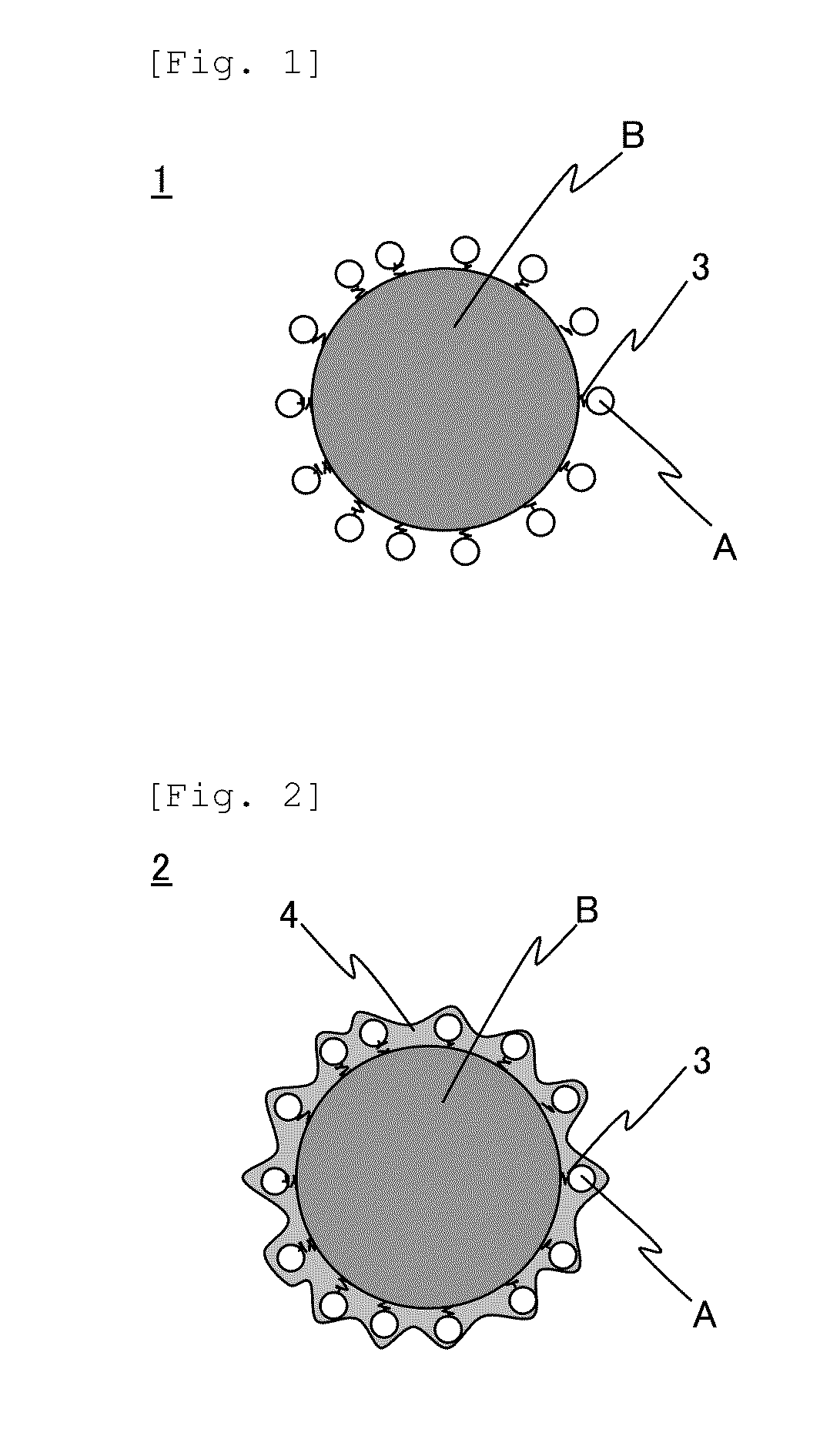Method for producing negative electrode material for lithium ion batteries
a lithium-ion battery and negative electrode technology, which is applied in the direction of batteries, cell components, electrochemical generators, etc., can solve the problems of shortening the charge-discharge cycle life of the resulting lithium-ion battery, reducing the charge-discharge capacity, and increasing the power consumption of portable electronics, etc., to achieve excellent charge-discharge cycle characteristics and large charge-discharge capacity
- Summary
- Abstract
- Description
- Claims
- Application Information
AI Technical Summary
Benefits of technology
Problems solved by technology
Method used
Image
Examples
example 1
(Preparation of Particle (A))
[0148]A Si particle (primary particle diameter: 100 nm) was prepared. In a recovery flask, 100 mL of toluene, and 0.2 g of 3-aminopropyltriethoxysilane (manufactured by Shin-Etsu Chemical Co., Ltd., LS-3150) as a silane coupling agent were charged, followed by ultrasonic stirring. To the resultant, 2 g of the Si particle was added, followed by ultrasonic irradiation for 10 minutes. Subsequently, the recovery flask was set in a reflux condenser for reflux at 135° C. for 1 hour to introduce an amino group onto the surface of the Si. The surface-treated Si particle was to be used as a particle (A-1).
(Preparation of Carbon Particle (B))
[0149]Petroleum coke was pulverized so as to have an average particle diameter of 5 μm. The resultant was subjected to heat treatment in an Acheson furnace at 3000° C. to obtain a graphite particle having a BET specific surface area of 3.2 m2 / g, d002 of 0.3363 nm, LC of 61 nm, a 10% particle diameter (D10) of 2.5 μm, a 50% par...
example 2
[0154]A negative electrode material was obtained in the same manner as in Example 1 except that the concentration of the sulfuric acid acidic potassium permanganate solution was changed to 2.5% by mass. According to SEM-EDX observation, a carbon particle was always accompanied by an Si particle and no Si particle was observed where there was no carbon particle observed.
[0155]The resulting negative electrode material was used to produce a lithium-ion battery for evaluation purposes, followed by measurement of the charge-discharge characteristics. The results are shown in Table 1.
example 3
[0156]A negative electrode material was obtained in the same manner as in Example 1 except that the concentration of the sulfuric acid acidic potassium permanganate solution was changed to 1.1% by mass. According to SEM-EDX observation, a carbon particle was always accompanied by an Si particle and no Si particle was observed where there was no carbon particle observed.
[0157]The resulting negative electrode material was used to produce a lithium-ion battery for evaluation purposes, followed by measurement of the charge-discharge characteristics. The results are shown in Table 1.
PUM
| Property | Measurement | Unit |
|---|---|---|
| temperature | aaaaa | aaaaa |
| temperature | aaaaa | aaaaa |
| temperature | aaaaa | aaaaa |
Abstract
Description
Claims
Application Information
 Login to View More
Login to View More - R&D
- Intellectual Property
- Life Sciences
- Materials
- Tech Scout
- Unparalleled Data Quality
- Higher Quality Content
- 60% Fewer Hallucinations
Browse by: Latest US Patents, China's latest patents, Technical Efficacy Thesaurus, Application Domain, Technology Topic, Popular Technical Reports.
© 2025 PatSnap. All rights reserved.Legal|Privacy policy|Modern Slavery Act Transparency Statement|Sitemap|About US| Contact US: help@patsnap.com



